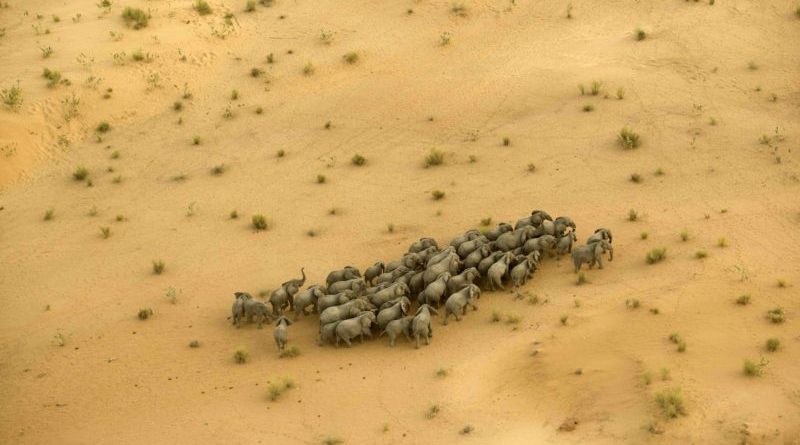INTERVIEW: Rhinos, elephants come into crosshairs in new doc, ‘The Last Animals’
Photo: The elephants living around Lake Chad are unique to the Sahel; they inhabit the desert, moving between water sources. In 2016, The Great Elephant Survey announced there were fewer than 650 elephants remaining in Chad. Photo courtesy of Kate Brooks / Provided by Nat Geo with permission.
Animals face unprecedented challenges in Earth’s ecosystems. If it’s not climate change, it’s poaching. If it’s not deforestation, it’s pollution in the oceans. If it’s not human encroachment, it’s lack of protection.
The new documentary, The Last Animals, by photojournalist Kate Brooks, explores some of the challenges facing animals, specifically the poaching threats to two iconic species: rhinos and elephants.
Brooks’ film, which premieres Monday, April 22 at 12 p.m. on Nat Geo, follows conservationists, scientists and activists who battle poachers around the world. The killing of these majestic creatures is coordinated and fueled by a global network of money and violence, and Brooks delves deep into the turmoil.
Brooks wrote, produced and directed the film, and what she captured is both revealing and frightening. And the stakes couldn’t be higher. The northern white rhino, for example, is on the brink of extinction, with only a couple animals left.
The Last Animals certainly covers the realities on the ground in certain African countries, but Brooks follows the dollars all the way to markets in Asia where rhino horn and ivory are sold. It’s an all-encompassing look.
Recently Hollywood Soapbox exchanged emails with Brooks, a well-respected photojournalist whose work has appeared in TIME, Newsweek, Smithsonian and The New Yorker. Questions and answers have been slightly edited for style.
What first attracted you to telling the story of these ‘last animals’?
At current rates of poaching, elephants and rhinos could go extinct in my lifetime. I wanted to tell the story of their plight — and the desperate efforts to save their species.
What are some of the dangers elephants and rhinos face in the wild?
The two biggest threats to elephants and rhinos are humans who want to kill them to trade in their body parts for trinkets, ornaments and medicinal purposes, and those who buy those products.
What is the ultimate reason for the poaching of these beautiful animals? Is it ultimately money?
Yes, criminal networks finance poachers and sell the tusks and the horn for commercial gain. The illegal wildlife trade is an easy way to make money and launder money. Penalties for smuggling wildlife are low compared to drug trafficking, yet rhino horn sells for more than a kilo of cocaine.
How difficult was the production for the documentary?
It’s been six years since I had the idea of making this film, and on Earth Day it will be broadcast on National Geographic. If I had known how long and hard the journey was going to be, I wouldn’t have had the courage to start or believed I had the stamina.
Professionally I am known as a war photographer. For example, I worked in Afghanistan on and off for about 10 years and covered the invasion of Iraq for TIME, along with documenting numerous other conflicts.
All I can say is making this documentary was by far the most challenging undertaking of my life, but The Last Animals is a legacy soul project that was fueled by passion to make a difference.
What do you hope the viewers take away from the film after experiencing it? What do you hope is learned?
My hope is that the film will educate people about the seriousness of environmental crime and wildlife trafficking and also inspire them to get more engaged. People who want to learn more and help can start by texting LastAnimals to 52886.
By John Soltes / Publisher / John@HollywoodSoapbox.com
The Last Animals, written, produced and directed by Kate Brooks, will premiere Monday, April 22 at 12 p.m. on Nat Geo. Click here for more information.

